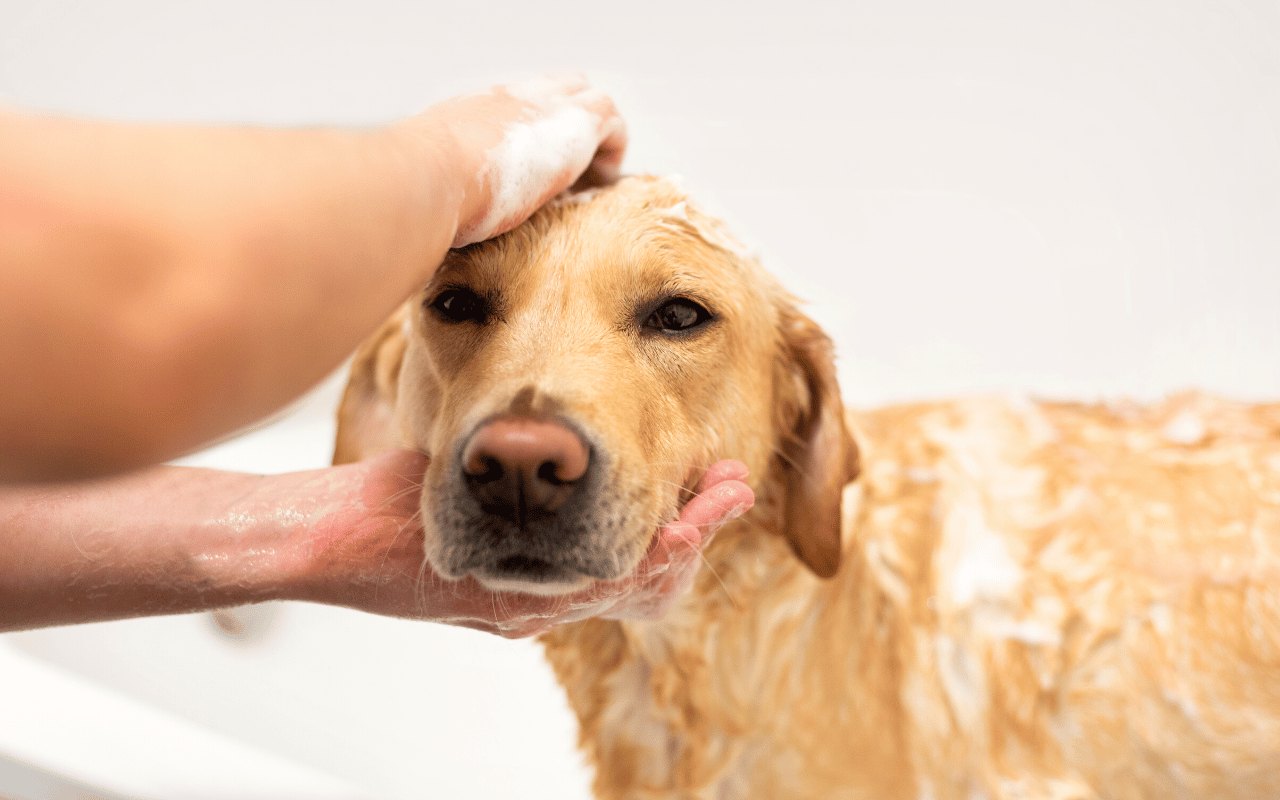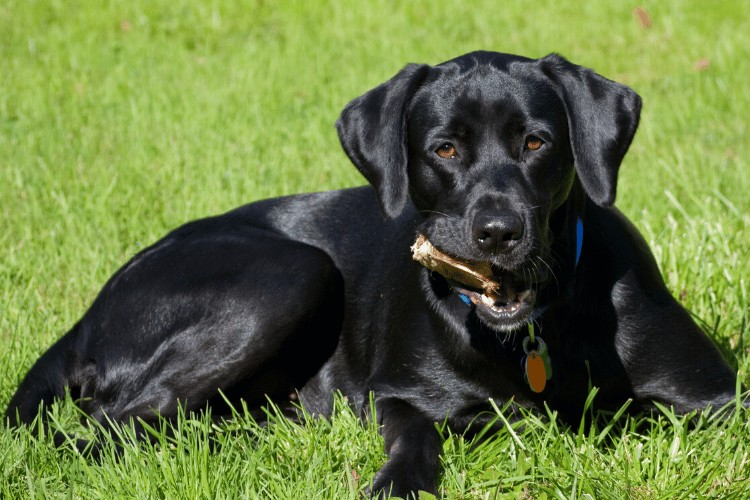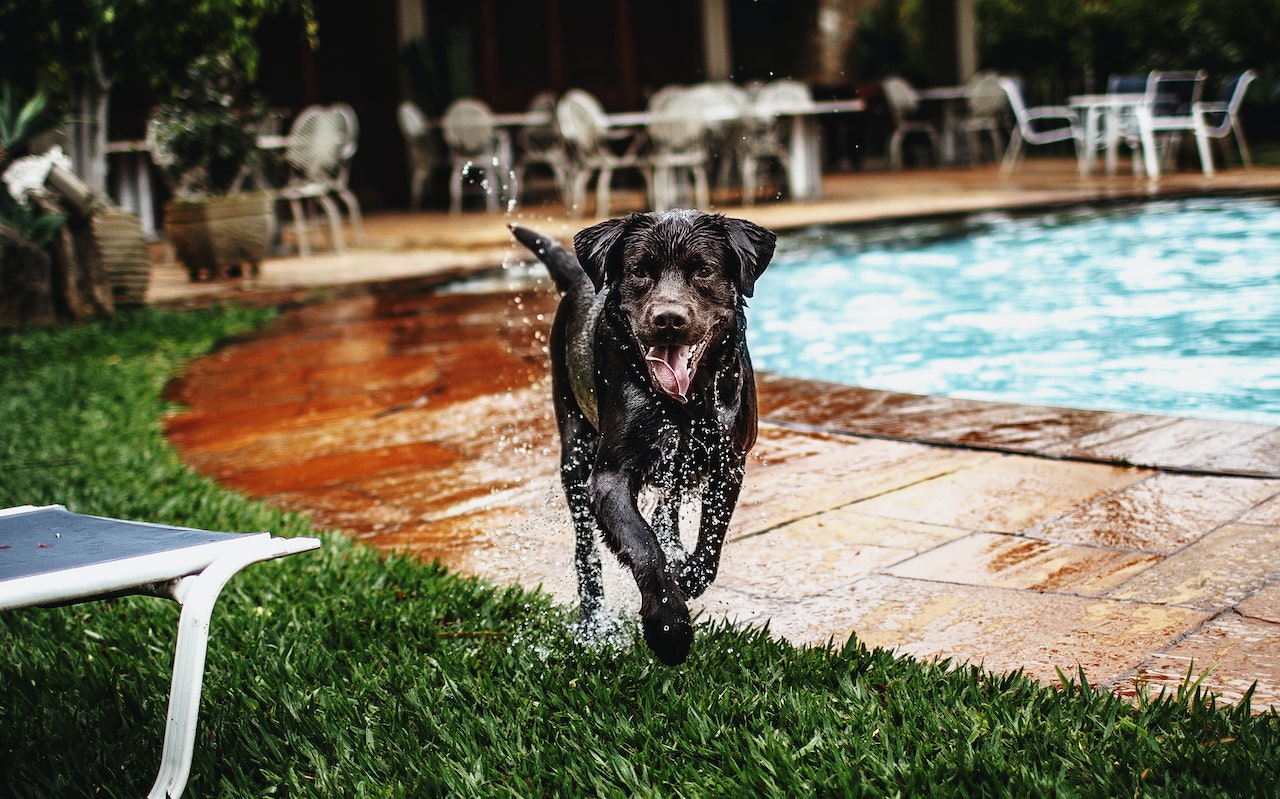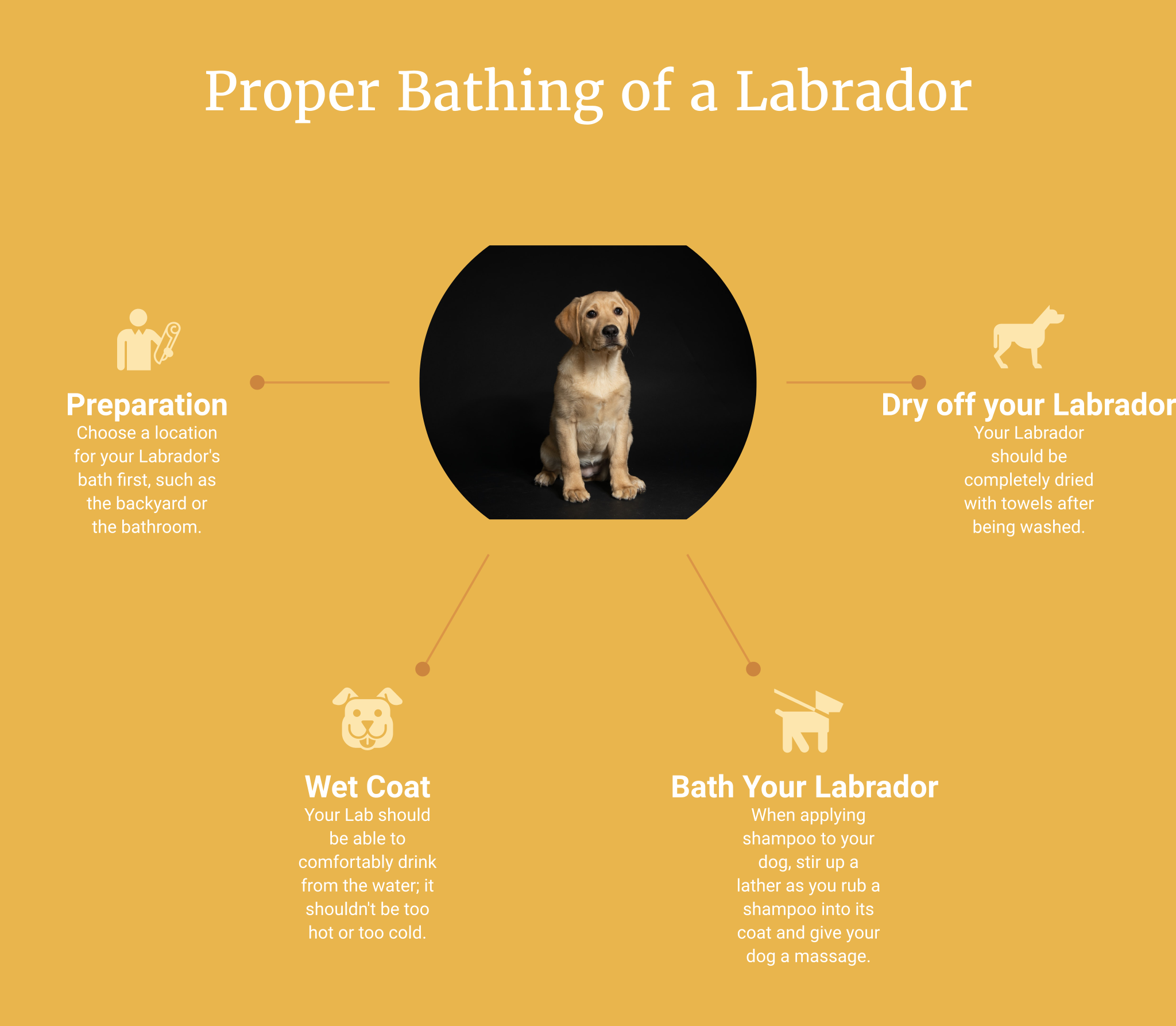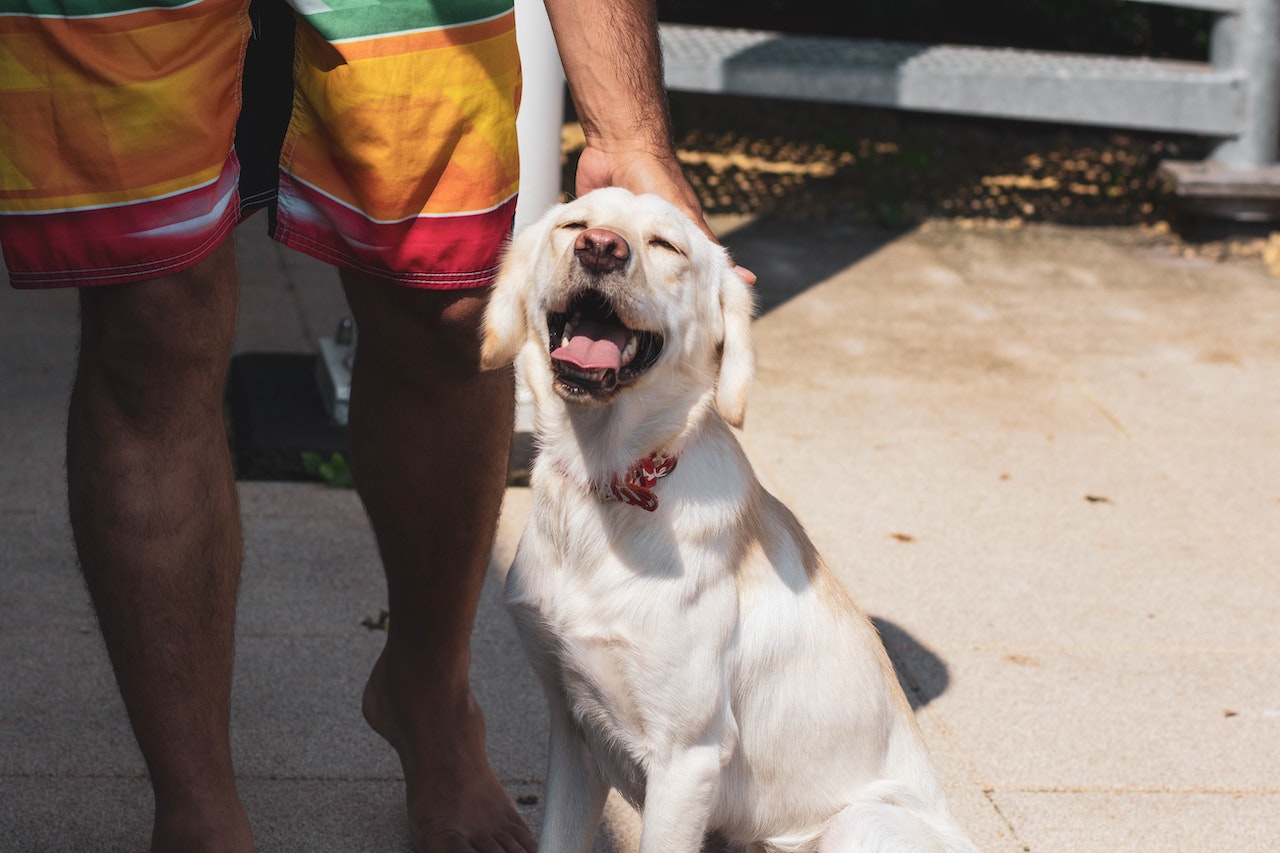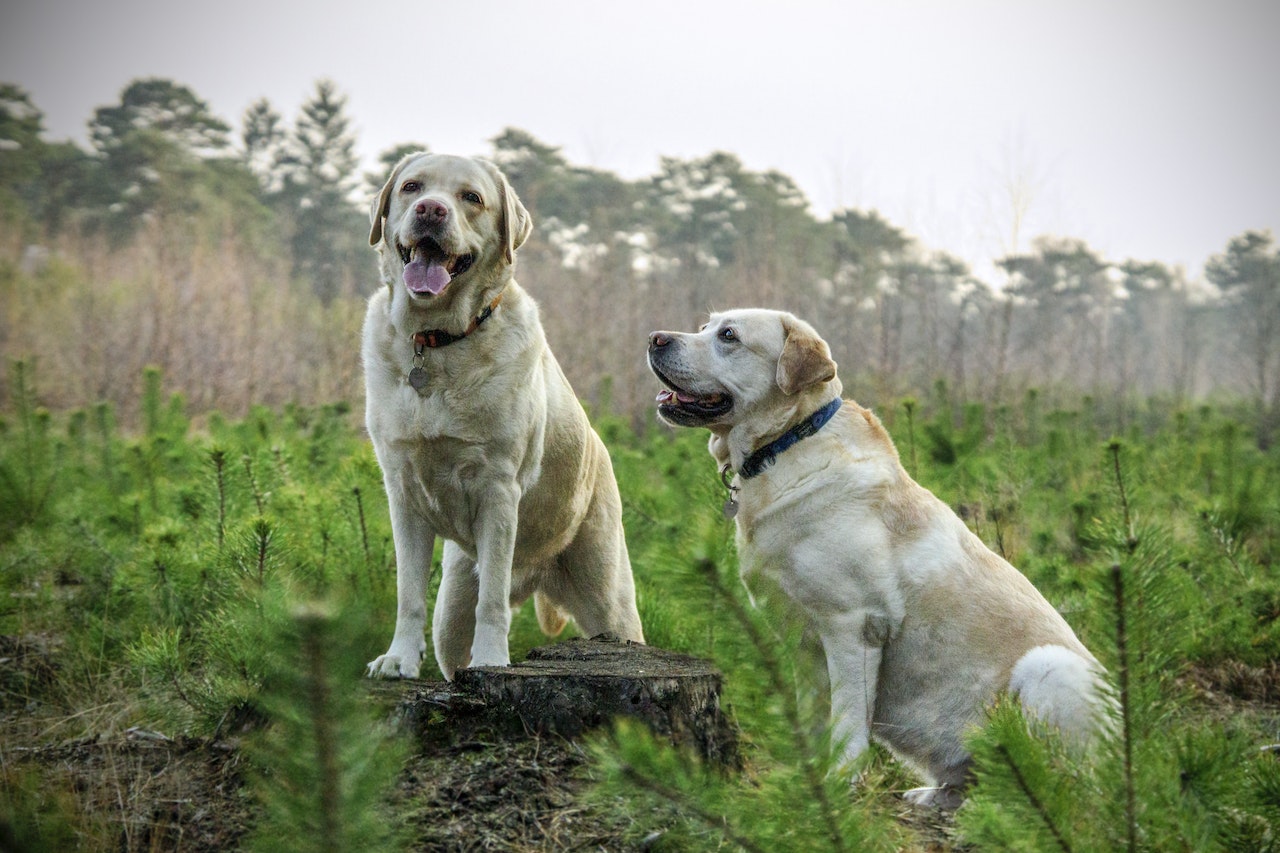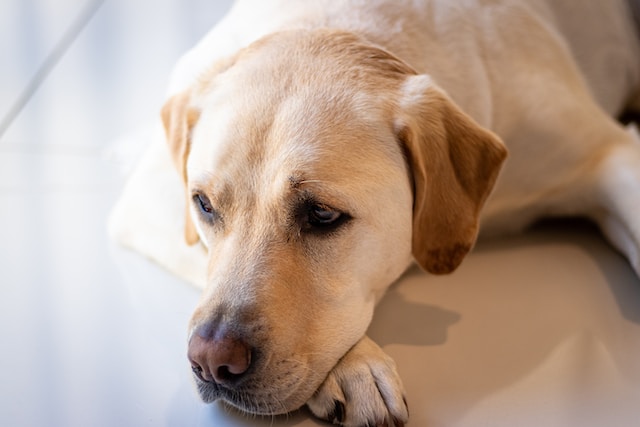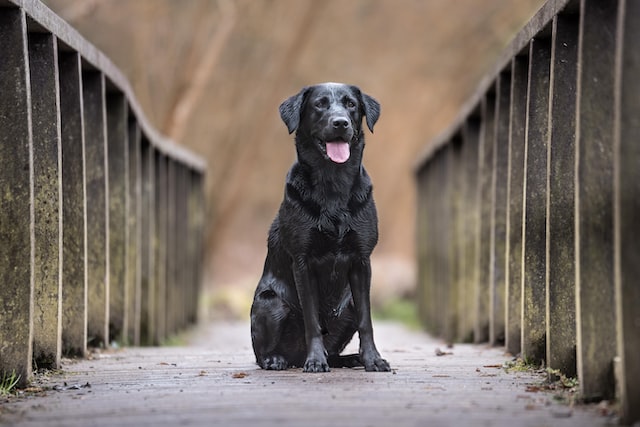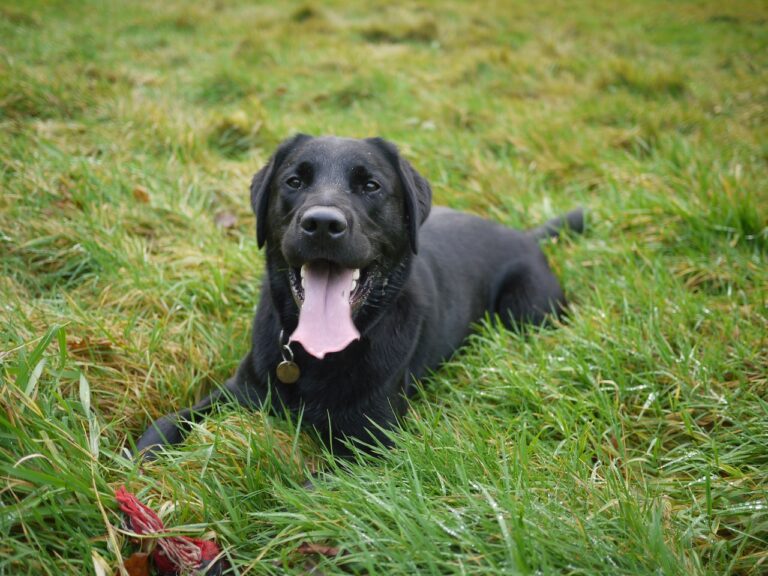How Often Should a Labrador Be Bathed
Do you properly take care of your Labrador and have them a regular bath? Labradors are not an exception the fact that dogs make excellent companions. While they are sociable, active, and devoted to their owners for the duration of their ownership. Labs require frequent bathing, just like other dogs do. The only remaining issue is whether or not there is such a thing as too much bathing for Labrador Retrievers.
At the absolute least, labs should take a bath once each month. If labs are bathed too frequently, their skin will dry and lose the beneficial oils that keep their coats healthy. A lab may require more frequent bathing if it spends much time outside. Limit the number of times each month you bathe them.
You probably didn’t believe taking a bath every day was possible. As a result, you’ll need to exercise caution when it comes to how frequently. And in what manner when you bathe your Labrador. So, here are some crucial pointers for grooming and other labrador care. Hopefully, learning more about this can help you decide how to care for your labrador retriever and soothe your concerns.
History of Labrador
Labrador retrievers are one of the most popular dog breeds in the world, notably in the United States, United Kingdom, & Canada. In the 1500s, in Newfoundland, Canada, waterdogs gave rise to labs. Fishermen used the St. John’s water dogs to collect ship ropes & fishing nets and hunters from retrieving waterfowl.
The St. John’s dog was a working breed renowned for its pleasant disposition and ability to work for extended periods of time in frigid waters. Currently extinct is the St. John’s water dog breed. The last of this breed is said to have passed away in the 1980s. But it appears that current Labradors have inherited their sensitive nature and propensity for hard labor and assistance to people.
According to descriptions, St. John’s water dogs have stocky, robust bodies and are of middle size. They possessed black hair and white spots on their paws, chin, chest, and muzzle. Some current Labradors & Labrador mixes display features of the St. John’s water dogs in the shape of white patches on the chest or chin or stray white hairs on their feet.
Labrador Coat
The Labrador has a double coat consisting of two layers: a softer, lighter undercoat lies beneath the wiry, abrasive topcoat. The Lab is kept warm in the winter and cooled off in the summer by its double coat, which serves as a barrier against dirt, water, and UV radiation. Compared to other breeds, Labradors require less care since they have a double coat.
Their coats don’t become long enough to develop uncomfortable tangles or knots, and they don’t need to make costly excursions to the groomer to get them clipped. However, Labradors shed a lot—all year long and twice a year when they have a full explosion. Regular washing and grooming can help eliminate extra fur and freshen your pet’s odor.
What to do Before a Bath
Since bathing your Lab won’t be necessary that often, it’s important to make the most of each opportunity by planning.
🧼️Brushing
Even though Labrador’s coarse coat is less prone to matting, it is still essential to brush your dog’s coat before washing it to get rid of any loose hair, dirt, or debris. Wouldn’t you rather that your dog’s fur was neatly gathered in the trash can rather than cluttering the shower’s hair trap?
A self-cleaning slicker brush is a great tool for evenly applying oil to your Labrador’s coat and safely removing all of the loose hair. For such Labrador’s short, tough hair, which may be difficult to remove from traditional slicker brushes, the self-cleaning function is very helpful.
🧼️Put Your Dog Tired
Many Labradors like being in the water. After all, this breed was designed for swimming. While bringing your dog into the bathtub may not be difficult, persuading them to remain still while they are having so much fun playing in the water may be difficult. It’s a fantastic idea to exhaust your dog by taking them for a long run and playing an extensive game of fetch before you take them a bath if you want a more peaceful bathing session.
🧼️Clean the Ears
Because of their oily skin and floppy ears, Labradors are prone to filthy ears and ear infections. Regular ear cleaning for your Labrador is crucial. Since your dog could have the propensity to shake their head while cleaning their ears, the operation can often be messy. It’s a good idea to clean your dog’s ears before bathing him so that you can also remove any debris from the ear-cleaning process.
Things to Avoid Before Bathing
To prevent washing your dog at inconvenient times, it’s crucial to plan out your dog’s bathing schedule. In the days before bathing them, you should avoid performing the following:
⚠️Topical Remedies for Fleas
You should wait for at least 24 hours before shampooing your dog after topical flea treatment, which is often administered by rubbing the drug between the shoulder blades. It is advised to wait at least two days after using topical flea treatment on Labs since they are big dogs with thick coats.
⚠️Topical Itch Relief Remedies
Unfortunately, itchy skin is a common problem among Labradors. To avoid wasting the topical treatment or creating an interaction between the medication and the shampoo you are using, it is recommended to wait until it is almost time to reapply before washing your dog if you use a topical anti-itch cream.
Proper Bathing of a Labrador
Even those who have a relaxed life on the sofa may find plenty of ways to have fun and get filthy. And although you would assume that Labradors automatically swim cleanly, given how well they do in the water, this isn’t always the case. You may think, “How often should I wash my Lab?” if you own a Labrador.
About once a month is a decent timetable for washing your Labrador Retriever; however, this will depend on your specific dog’s lifestyle and the degree of activity. Here are the proper ways to take a bath with your Labrador.
When washing a Labrador, you must properly clean its coat and have the proper supplies, so be ready in advance.
Prepare
Wet
Bathe
Dry
🐕Preparation
Choose a location for your Labrador’s bath first, such as the backyard or the bathroom. Make sure you wear old clothing since washing your Lab may be a dirty, wet process. Non-skid mats help save your Lab from sliding and falling in the shower or bathtub. Assemble your supplies, which should include towels, dog shampoo, dog conditioner, if desired, and a hair dryer. Never use human shampoo on a dog since it might harm their skin and make them ill.
🐕Wet Coat
Your Lab should be able to comfortably drink from the water; it shouldn’t be too hot or too cold. You must thoroughly moisten the coat of your Lab. They have a water-resistant second layer. Thus it can take some time. Instead of soaking the whole body at once, wet your dog in segments.
🐕Bath Your Labrador
When applying shampoo to your dog, stir up a lather as you rub it into its coat and massage it. Before washing it off, let the shampoo stay on your pet for a few minutes. Stay away from delicate regions like the eyes and face. You may have to rinse & repeat if your Lab is very filthy. Repeat the same procedures as for shampooing if you use a conditioner.
🐕Dry off your Labrador
Your Labrador should be completely dried with towels after being washed. If you want to get into the dog’s undercoat, a hairdryer is perfect, but keep it away from the dog’s skin and make sure your pet is used to the noise before using it so they won’t be scared.
Benefits of Bathing and Grooming Labrador
When it comes to washing and grooming, Labradors are rather low-maintenance pets. Like many other breeds, they don’t need regular, costly visits to the dog groomer or haircuts. However, they do need washes occasionally, and keeping your Labrador on a regular schedule for washing and basic grooming has some advantageous effects.
Regular bathing may help remove some of the extra hair from Labradors since they have a double coat and are a high-shedding dog breed. As a result, you may notice reduced shedding around your house. Regular showers will also make your Labrador smell better and reduce the possibility of “dog odors” spreading throughout your home. Baths also help remove the dry skin or extra dander from the dog and make the coat of your Labrador seem even more shiny and lush.
A regular schedule of Labrador baths will be crucial in helping control the dander that may greatly influence your allergy problems if you have allergies or live with someone who does. Avoid bathing your dog too often since it might cause their skin and hair to become dry. Avoid harsh chemicals and only use soft dog washes or baby shampoos. Additionally, our Labradors have never required conditioner—only a little shampoo.
🚿Bathing Tips
-Instead of soaking their whole body at once, start your dog’s wash by wetting them in little parts. Lastly, focus on their head region. A dog’s head and ears will seek to shake off any moisture, drenching you and anything in your vicinity in the process (and hairy).
-Section by section, wash their bodies with water and then go on to the next area. For instance, you may work on each piece of their back, tail, & legs separately. This rubbing & scratching portion of wash time may be enjoyable for your dog.
-Despite Labradors’ well-deserved reputation as water dogs, they often act out when given a wash and try to flee.
-To get to your dog’s tummy and beneath, you may use a bathtub or even a shower with a hand-held showerhead that can be detached.
🚿Shampoo and Drying
-Be extremely cautious not to use too much shampoo or water while bathing the area around their ears & face since this might irritate their eyes, just as it does with humans.
-Your Labrador dog may get ear infections if you manage to get water down into the ear canal. Use cloth in front of their ear if necessary, or be cautious about covering their ear with your palm to stop water from entering. Instead of using a showerhead with excessive force, use a bowl and cup to pour water gently over the person’s head.
-Your Labrador should be dried in segments using many towels. You may also use a blow dryer if your Lab is amenable to it in a light setting, but be careful not to heat it up too much.
-Recognize that Labradors do take some time to dry and that even after using many towels, it could take some time for your pet to dry entirely. Plan to keep them inside for many hours after their bath to let them dry off, particularly if it’s chilly outside.
-To lessen your Labrador’s pain and the quantity of shaking off after the wash, dry off his head and ears extremely well.
-A little eagerness and frenzy should be expected from your dog after the wash since labradors often gallop about when they are let out.
🚿Bathing Labrador Puppy
When bathing your Labrador puppy for the first time, go gently to avoid frightening them with loud noises and excessive bathtime excitement. Puppies may find it thrilling at first, but it may also be a little overwhelming.
Your Lab puppy could be apprehensive or nervous when entering the bath for the first time, especially if they have not yet been acclimated to the water.
You don’t need to bathe your puppy the first few times; instead, we advise you to start slowly by just bathing the paws or legs and then gradually work your way up to having more of the puppy cleaned a few weeks later.
Your Labrador will come to adore bath time if you take it gently. If you move too hastily, your Lab may grow nervous or timid when the time comes for a wash in the future.
🚿Bathing Older Dogs
If you’ve maintained a solid routine, washing your senior Labrador, who is used to bath time, may go extremely well. You could have trouble keeping your Lab calm and contained during its showers if they are older than a puppy but not as used to bath time. This is particularly true if they attempt to escape.
Even while it would seem simpler to wash both of your dogs at once, particularly if one of them is a Labrador Retriever, we advise against doing so unless you have assistance. Be mindful that an older dog may have increased joint stiffness or other problems that make it difficult for them to jump into and out of the water.
Find a spot in your house, like the shower, where your senior Lab can enter and exit without jumping or climbing.
🚿Grooming Tips
You may wish to check the length of your Labrador’s nails and the cleanliness of its ears when giving them their monthly wash. If you want to clip your dog’s nails yourself, you may buy an at-home nail trimmer, but please ask your vet or a vet worker to demonstrate how to do it first.
Trimming your dog’s nails too short may seriously damage their paws and make them bleed. To determine how little to remove, you need to have someone knowledgeable teach you what to look for on the underside of the nail. When in doubt, just get their nails cut. A trim at a vet’s clinic costs about $20 per dog, and since the staff members are so skilled at it, they often do the task considerably more quickly.
Additionally, you may get ear cleaner from a pet shop or your veterinarian’s office. Because not all ear cleaners have the same components, you should consult your veterinarian for advice on the best kind of product for your specific dog.
If you purchase an ear cleaner that contains alcohol, it can irritate your Lab’s delicate ears. Simply ask your veterinarian for their gentlest recommendation for preventive. If you have a swimming pool or often take your dog swimming, be sure to dry their ears after being in the water to avoid any ear infections from developing in that manner.
Labrador Caring Tips
You must ensure that your dog lives in a space where they are both happy and healthy, keeping them clean and smelling good. Here are some pointers for daily happiness and health maintenance for your Lab.
Due to their size and hyperactivity, labs are typically kept outside as pets since it is not practicable or healthful for them to be inside all the time. In light of this, you must give your dog lots of outside time so they may play and be content. Labs like spending time indoors with their owners as well, however.
In addition to enjoying human company, laboratories sometimes find the outdoor temperature a touch too warm and prefer to be inside where it is cooler. If your yard is shaded, that’s great, but if you live in a hot, dry climate where the temperature often soars beyond 90 degrees Fahrenheit, staying inside can be the best shelter for your Lab.
Additionally, you must daily exercise your Lab. Labs are energetic canines that need a lot of exercises. If you don’t give them that activity and care, they can start acting out and picking up harmful behaviors. Giving your Lab at least 30 to 60 minutes of exercise each day is a good idea. They will be absolutely content and healthy as a result.
Skin, Ear, and Eye Care
The Lab’s ears complete its delicate appearance, but they often prevent air from moving below. They become a target for infections as a result. Make sure there isn’t too much wax accumulation, and clean it to prevent them from worsening. How to carefully clean the ears and maintain them clear of debris may be shown by your breeder or veterinarian.
The Lab’s direct appeal is completed by its kind, inviting eyes. Notify your veterinarian if you see any discharge that is yellow or green. Otherwise, wipe them with a clean cloth after playing in the field or swimming in the lake. Protecting your dog’s skin and health by keeping ticks and fleas away. These pests may easily hide in the Lab’s double-thick coat. You may discover these bothersome irritants using the daily comb or monthly wash to keep them from wreaking havoc on your dog’s body.
Cleaning a Labrador Ears
While maintaining clean ears is vital for most breeds, it is particularly crucial for Labradors. Dog breeds with erect ears or ears that fold over in the tip are less likely to get ear infections than those with floppy ears, such as the Labrador. Due to their oily skin and floppy ears, Labradors are particularly vulnerable to ear infections.
🔹Avoid Overcleaning
Your dog’s ears should be cleaned often to prevent ear infections, but you should avoid overcleaning them since this may also cause irritation and infections. As a result, you must simply clean your Labrador dog’s ears when required. An odorless, pink ear indicates a healthy, clean ear. It’s time to clean your ears if you see black or brown dirt and debris accumulating around them or if they smell musty or yeasty.
🔹Ear Cleaners
Select an ear cleaner that is mild, veterinary-recommended that cleans your dog’s ears with the least amount of rubbing and damage possible. An ear cleanser with hydrocortisone, designed to fight bacterial, yeast, & viral infections, may be an excellent choice if your dog is especially prone to ear infections, as many Labradors are.
The cleaner may penetrate the ear canal of your dog by holding it open. Use your fingers to massage the base of the ear while you spread the cleaner around the ear canal. The cleaner squishing all around the ear should be audible. Holding your dog’s head firmly as you massage the ear is a good idea since most dogs want to shake their head during this procedure.
After that, either pour the cleaner into your dog’s ear canal or give them a headshake to do it. To thoroughly clean the inside of your dog’s ear, use cotton balls or gauze, being sure to reach any crevices. To get rid of any dirt that has been caught on, you may need to dip a cotton ball in an extra ear cleanser.
Washing Labrador Face
Because of the shorter, softer hair on their faces, Labradors sometimes have faces that seem oilier than the rest of their coat. Use mild wet wipes produced exclusively for dogs to remove any extra oil from your Labrador’s face and restore its fresh scent if you discover it before you’re prepared to wash them.
Take extra care while cleaning your Lab’s face during a bath to prevent water from entering the ear canals, which increases the risk of ear infections. Pinch the ear canal shut while bathing the face to prevent this.
🔹Drying Labrador
Your Labrador may be dried off by rubbing them with a towel. Use one towel to absorb the majority of the moisture and a second to aggressively massage the coat and wring out the remaining moisture. Because of their water-resistant coats, Labradors often dry very quickly after a wash.
🔹Wet Dog Smell
Have you ever found that your Labrador really smells worse after a wash, like a wet dog? Although it could take a few hours & leave your home with a dog-like odor for some time, the scent will fade as your dog dries. Try blow-drying your dog after a wash to get rid of any remaining moisture in its coat if you truly want to prevent the scent of a wet dog.
Things to be Aware of After Bathing
It is particularly crucial to keep a tight eye on your dog after bathing if it is your first time or if you are moving to a new shampoo to ensure that they don’t have any adverse reactions to any of the components. Watch for redness, dry, itchy skin, indications of lethargy, or unwillingness to feed. It’s a good idea to brush the dog again after washing and to keep brushing more regularly for the next day or two until all of the lost hair has disappeared since dogs typically shed more shortly after a bath.
Check their ears last. Their floppy ears make them more susceptible to ear infections, so if you can wipe the ears and keep them dry, spotting any inflammation at the first indication may save a trip to the vet.
Labrador Pros and Cons
Overall, labs are wonderful companion animals. Since they get along well with kids and just about everyone, they are great family dogs. However, they have certain problems (like any breed does), so you should learn more about them before deciding to get one. Here are some advantages and disadvantages of Labrador Retrievers.
✔️Pros
One of the major benefits of running a lab is its friendliness, as was already noted. They are sociable with most people, especially youngsters, yet they will defend their owners if necessary. Although they get along with practically everyone, your Lab will steadfastly defend you if you are in danger.
Additionally, they are safe and enjoyable. You’ll stay busy with a lab since they’re fun to play with and observe. This is one of the main explanations for why they are such well-liked family pets. Playing with a lab would keep your kids occupied and active if you need to.
❌Cons
One of the major turn-offs for laboratories is shedding. Most dog breeds shed, yet labs have thick coats and shed often. While brushing will assist, it won’t make the problem go away entirely. Consider choosing a non-shedding breed if you are not prepared to put up with a lot of dog fur.
In addition, maintaining a lab will keep you quite busy. They will need daily exercise for at least an hour. This may not be a major concern if you prefer to be quite active or are a runner. However, a lab is probably not your greatest dog if you have a hectic schedule.
Frequently Asked Questions
Can I give my Labrador twice-weekly baths?
The reply is, “It depends.” Depending on your dog’s activity level, coat type, and skin health, it might be anywhere from a few times a week to once every few months. It varies on the dog, but in general, many dogs would benefit from a wash every month or so.
Can I give my Labrador a bath every day?
Overbathing may greatly dry your dog’s skin, leading to scratching and peeling. Overbathing your dog depletes the natural oils, which contributes to dry skin and lessens the sheen of their natural hair.
Should I give my Labrador a daily brushing?
To reduce shedding, your Labrador should ideally be groomed daily or at least once a week. Your Labrador’s coat might benefit from regular usage of a de-matter, undercoat rake, and slicker brush.
In the summer, when should I bathe my Labrador?
Once every few weeks or once a month is sufficient. Regular bathing may remove vital oils, causing the skin to itch and the coat to dry. There are leave-on sprays that condition and clean your dog, and you may use a moist cloth to wipe off dirt if you need to clean your dog between showers.
How do you dry a Lab after a bath?
Before using towel number two, wait until towel number one has absorbed all the water it can. The sort of water loss that a dog’s coat typically creates is replicated by dog towels, which are expressly made for the purpose. Using a dog dryer is an excellent alternative. The closest analogy would be a dog hair dryer.
Final Thoughts
When it comes to washing and grooming, Labradors are rather low-maintenance pets. They don’t need regular visits to the dog groomer or trims, but they require periodic showers to keep themselves clean and healthy. Fortunately, you can do this at home. Bathing your Labrador Retriever on average once a month is a decent plan; however, this will depend upon your lifestyle and the degree of activity of your specific dog.
Bath time can be enjoyable for you and your Labrador with a few simple tips, and you’ll have a fresh-smelling pup eager for cuddles on the sofa.

